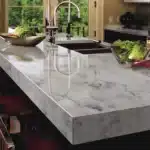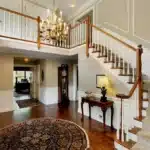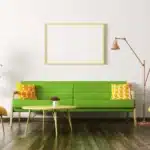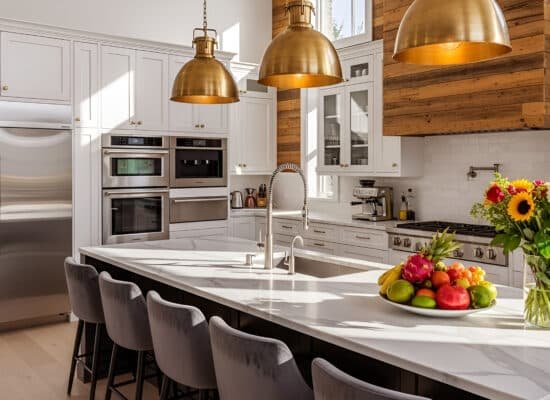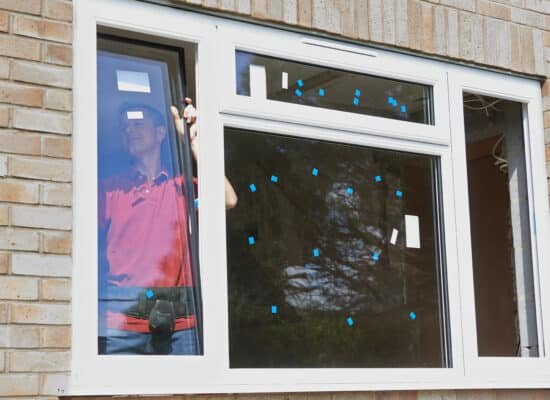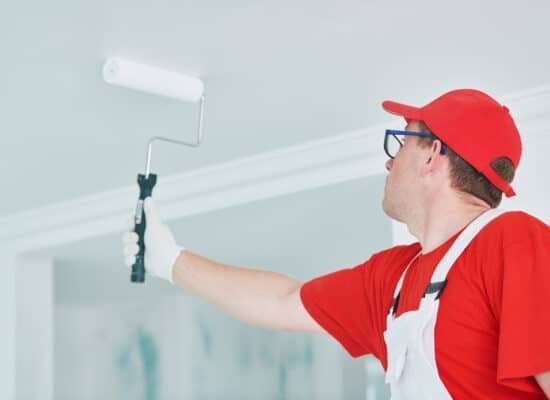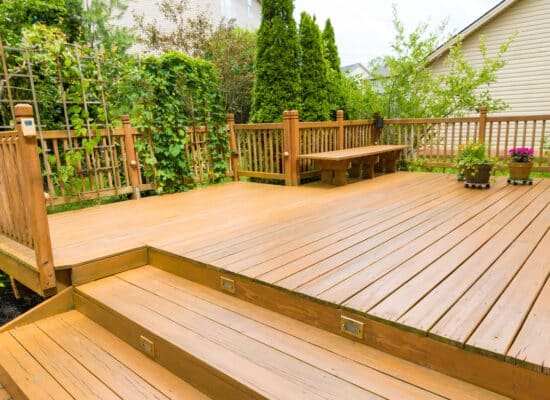Whether you work from home full-time or use your professional home office space for remote work, time management, or paying bills, everyone deserves a home office that encourages effortless productivity. Of course, it takes more than a desk hastily shoved into a corner in order to accomplish that.
Table Of Content
If you’re like most people, your “home office” is likely disjointed and unorganized, and that will definitely hamper anything you try to get done. Here are some tips to help you turn your home office into a space truly worthy of the name.
#1 Put a professional home office in the Right Location
Even if you don’t have a lot of space to spare in your home, it may be worthwhile to consider shuffling things around a bit to ensure your home office is in the prime location to enable efficient work.
This means putting it away from the hustle and bustle of the home, out of earshot from the television or kid’s play area.
In most cases, you’ll also want to consider where you get the best Wi-Fi signal in your home and choose an area with plenty of electrical outlets to power your devices.
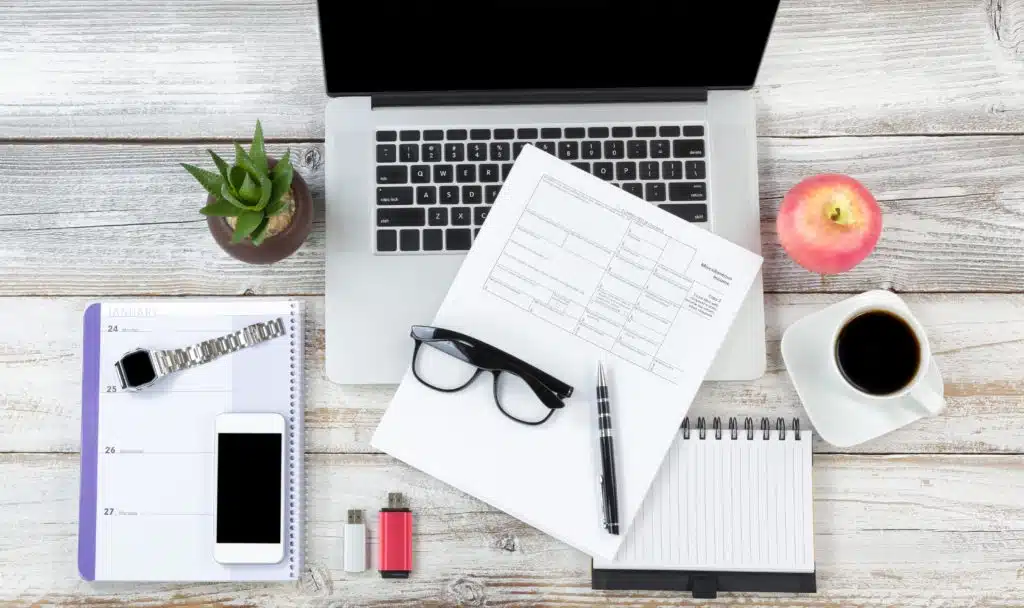
#2 Determine What You Need To Do
You should always start your home office redesign by thinking about the main functions of your home office. Do you mostly sit at a computer or laptop most days? Do you need an easily accessible filing system for important papers? Do you have books that will need to be referenced often? How about the need for a phone, printer, fax machine, or other equipment? Think about how you will be using your home office most often and the tools you will need to make your work as easy as possible.
#3 Place Your Desk in The Right Spot
Whether the room has a bunch of natural light or just a little, you’ll want to place your desk in the spot that makes the most sense. For some people, looking out the window all day is the perfect opportunity to think things over and even get their creative juices flowing. For others, it becomes a total distraction. But, facing the window may be your only option in a small space, in which case you can get privacy blind to help obscure the view in and out.
Generally, the place where you sit your desk should have lots of natural light but don’t face your screens facing the window as that can create a glare if direct sunlight comes through. If the room does tend to get hot during the day, be sure to get a privacy screen that helps block out heat without completely darkening the space. Also, consider if you will be placing a fan in the window and make sure it won’t ruffle papers on your desk if you do.
#4 Get Your Storage Straightened Out
The organization should be a top priority when you are designing your home office. It won’t matter how big it is or how nice it looks if your papers end up all over the place and you can’t find things anywhere. That means, after considering the placement of your desk, you must think about where you can put shelves, cubbies, and other stores that will help you sort out what you are putting into space.
Before you buy a bunch of shelves or drawers, think about what you will be storing. The organization has a different approach based on what you are organizing. For instance, books belong on shelves while papers belong in drawers. Think about what you’re storing and how much you’re storing when placing your organizational and storage components into the room.
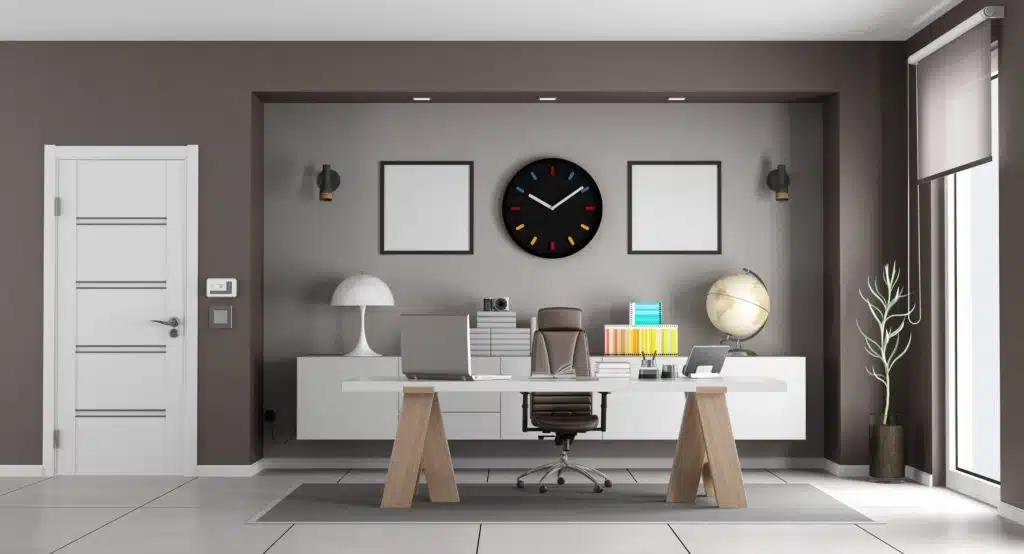
#5 Invest In A Great Chair
The function takes priority over form when designing your home office, so the next big decision you must make is your office chair. This is the final big decision you must make before you can get to the really fun part–the decorating! You’ll be spending hours in your office chair, so it must be comfortable to sit in. Some people prefer a chair with wheels, and that can be especially helpful if you’ll be rolling from your desk over to a printer or drawer system.
You’ll also want your desk chair to look professional, but you should prioritize comfort because you’ll be sitting in it far more than you’ll be looking at it! An adjustable-height chair is typically the way to go, and get one with adjustable armrests and lumbar support is a big plus. Don’t skimp on this part of your office.
#6 Hang Curtains
Decorative curtains are the first “big thing” you can do to transform a home office from a soulless cubicle into a space filled with personality. You do not have to use the curtains, hang them (preferably high and wide) over the window and leave them open. You can even get curtain tie-backs to keep them perfectly draped to either side of the window so they do not obscure your natural light.
Of course, these curtains can be used if you need them, but a privacy blind that you can effortlessly pull up or down without fully blocking light is usually the way to go for an office. When hanging your curtains, if you want to make space feel larger, hang floor-to-ceiling curtains. To make it feel even larger, hang the curtain rod nearer to the ceiling and get longer curtains so they come all the way to the floor. This helps draw the eye up.
If you have room to either side of the window, adjust the curtain rod to slightly side than the window and have the curtains drape so they disguise the wall on either side–this will help the window and space feel larger all around.
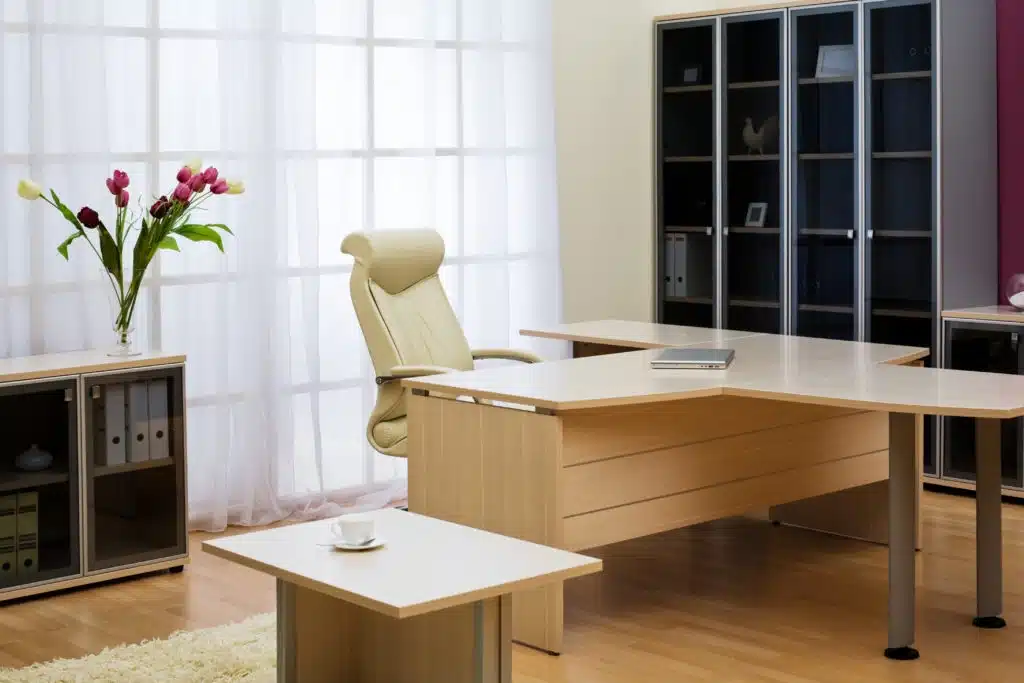
#7 Decide On The Big Things
The big things will really be the guiding light when it comes to bringing your office together, so think about putting a rug on the floor or painting the walls a color that matches the little things you want to bring into the room. Generally, you’ll want to keep the larger things neutral (like curtains, rugs, and walls) and bring in color using the smaller objects (like bookends and wall art). This also makes it easier to change out the color and design styles later on by just getting new small objects to decorate the space.
If you need help deciding on the big things, look at the core furniture pieces already in the space. They should coordinate in material or even match in color. While mixing and matching can add personality, try to keep all of these big things very similar so they go together well. Mixing materials–like a wood desk with metal legs–can help add interest without cluttering or complicating the style. Once you have the foundation of your home office together, you can get the finishing touches.
#8 Get The Finishing Touches
One of the final steps in designing your home office is to work out the finishing touches. That means putting picture frames on your desk and looking for a bit of wall art to spice up the space. Your personal tastes will have a significant impact on what type of design elements you choose to use. For instance, more youthful design styles may have trinkets and fun signs on bookshelves, perhaps with stencils on the wall. More clean and professional design styles will keep things minimal without being boring. You can do that by utilizing metals and wood along with monochrome colors.
Whatever you choose to bring into your space, always think about coordinating or complimentary colors. This will help you bring together the many different things that you love and allow them to flow cohesively into space. Just remember that “texture and tone” are the two things you should look to match when mixing new objects and making sure they will go well together. Try to find similar textures and tones for a professional yet personality-rich feel that will have you loving your home office space.

